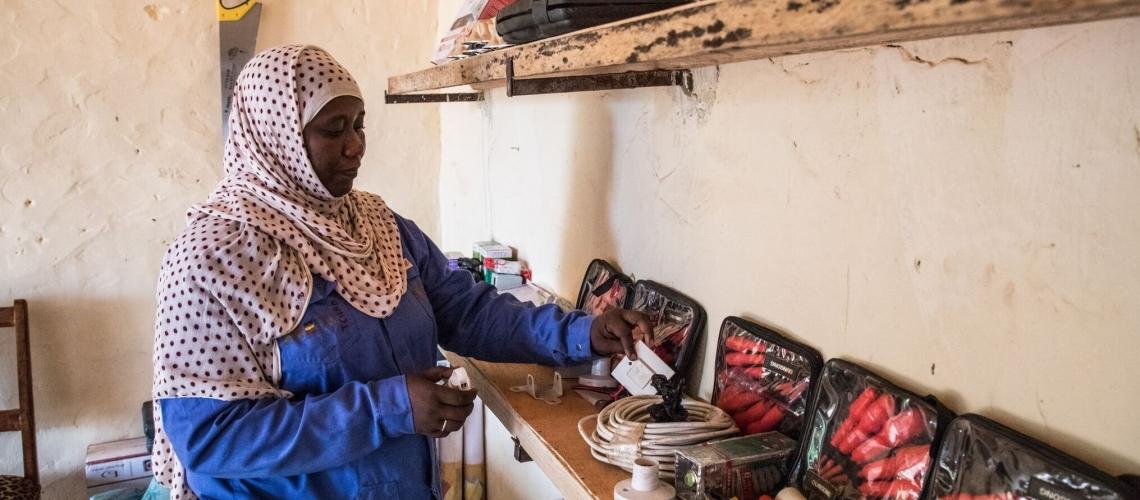Five Ways the World Bank’s IDA-19 Is Supporting the Poorest Countries in the Time of COVID

The COVID-19 crisis has been a sudden, high-speed reverse gear – quickly eroding gains in economic growth and poverty reduction across the world. The pandemic is still escalating but the pain it is causing in the lives of billions of people is especially evident in the world’s 74 poorest countries supported by the International Development Association (IDA). These are countries where children, women, people living in fragile and conflict-affected situations, and those employed in the informal sector are suffering the most.
Amid these unprecedented and disheartening times, I joined as Director of the incredible IDA Resource Mobilization and IBRD Corporate Finance team, which has stepped up to the plate in the COVID-19 fight. The team is contributing to the World Bank’s delivery of an exceptional response to help countries deal with the demands and effects of the crisis. I am excited to be part of it.
IDA’s support is part of the broader $150-160 billion World Bank Group response over a 15-month period and includes $50-55 billion in low-interest credits and grants focused on saving lives, protecting the poor and vulnerable, creating jobs, saving businesses, and building a more resilient recovery. Over the next 12 months, IDA will deliver close to $10 billion in new grants for low-income countries at higher risk of debt distress.
July 2020 is the kick-off of IDA’s 19th funding cycle (better known as IDA19). The IDA19 program—supported by a historic $82 billion replenishment—was developed before the COVID-19 pandemic hit, but in the face of the crisis it shines as even more relevant today.
The 500 million people living in extreme poverty in IDA countries remain at the center of IDA action, whose work and impact aims to make the world a better place for everyone. IDA is uniquely positioned for this mission, so let me share with you five transformative elements to look forward to in IDA19:
1. Sharply focusing on crisis preparedness and earlier response to slower-onset crises.
Prime focus will be stronger resilience building including pandemic preparedness and reducing risks from climate shocks. The COVID-19 pandemic reminds us of the importance of strengthening resilience against any shocks that might strike. That is what IDA19 will proactively do.
2. Implementing a new debt policy.
Many IDA countries were already at high risk of debt distress before COVID-19 which is exacerbating the situation. A new debt policy in IDA19 called Sustainable Development Finance Policy will help incentivize countries to borrow sustainably and promote coordination between IDA and other creditors.
IDA17 Retrospective - Maximizing Development Impact; For more information: http://ida.worldbank.org/financing/re...
3. Creating more and better jobs.
Jobs are a critical element of poverty reduction. In many IDA countries jobs are scarce and COVID-19 has exacerbated this situation. The jobs agenda will include facilitating job-creating private investments and much needed infrastructure. Digital technology will also be important in the jobs’ agenda. IDA’s Private Sector Window will scale up and mobilize private sector investments in IDA countries with support from IFC and MIGA. And IDA19 will ensure there is the human capital with appropriate skills, health, etc.
4. Increasing tailored support in fragile and conflict-affected situations.
This will help to address a range of risks related to fragility, conflict, and violence (FCV), with strong incentives and accountabilities for countries to confront FCV drivers. The Bank’s FCV Strategy will strengthen operations in this regard, and IDA19 will also do more to address regional drivers of fragility through regional programs, including in the Sahel, Lake Chad region, and the Horn of Africa.
5. Thinking regionally.
Scaled up support for regional integration, such as investments in infrastructure for greater regional connectivity, trade facilitation, and digital economy. Thinking regionally will help facilitate collective action to address common goals.
Even though the environment might be challenging, we optimistically move on knowing that the agenda we have to deliver is for important clients – all the poor people in IDA countries who look forward to a better world. With just 10 years to 2030, it’s important that we shift the gear of development back to overdrive towards ending extreme poverty. I am excited by this prospect.
Source: This blog was originally published here in the World Bank Group’s Voices blog.
Photo Credit: In poor areas of Africa's Sahel, the Sahel Women’s Empowerment and Demographic Dividend project (SWEDD) has already provided professional training to almost 100,000 women so they can pursue income-generating activities. Photo: © Vincent Tremeau/World Bank
To view this blog in a MailChimp setting, click here.
Disaster Risk Finance | COVID-19 Blog Series
- Five Lessons on Disaster Risk Finance to Inform COVID-19 Crisis Response
- Five Reasons You Should Be Thinking About Compounding Risks Now
- Five Reasons the Global Risk Financing Facility Is Relevant During an Ongoing Pandemic
- Five Ways COVID-19 Leads to Natural Catastrophe Protection Gaps at the Sovereign Level
- Expect the Unexpected: Three Benefits of Rainy Day Funds
- Five Ways the World Bank’s IDA-19 Is Supporting the Poorest Countries in the Time of COVID
- Three Ways That Contingent Policy Financing Contributes to Resilience Building Before, During, and After COVID-19
- Five Reasons to Support SMEs So They Can Build Stronger Resilience to Future Disaster Shocks
- Three Reasons the Public and Private Sectors Are Stronger Together Against Disasters and Crises
- Five Ways Satellite Data Can Help Prepare for the Unexpected
- Four Ways Disaster Risk Finance Strengthens the Effectiveness of Adaptive Social Protection
- Three Ways to Enhance Online Knowledge Exchange During the COVID-19 Pandemic